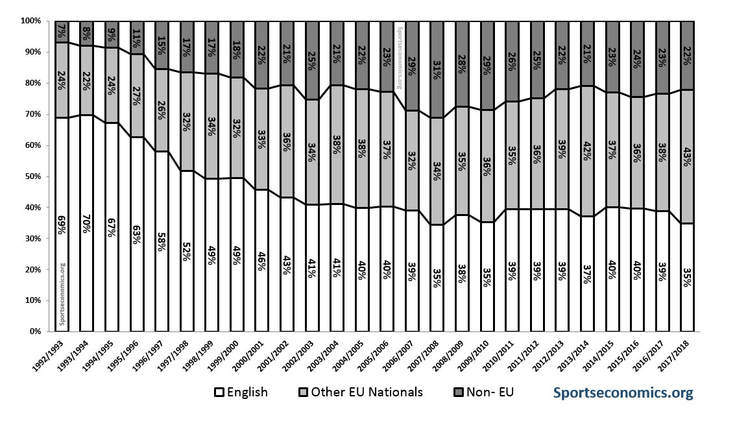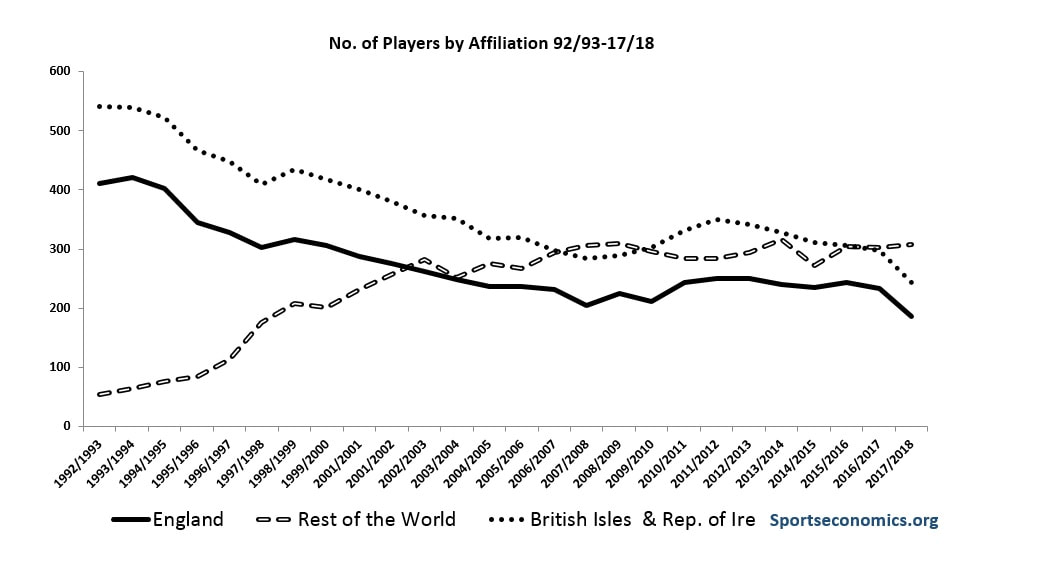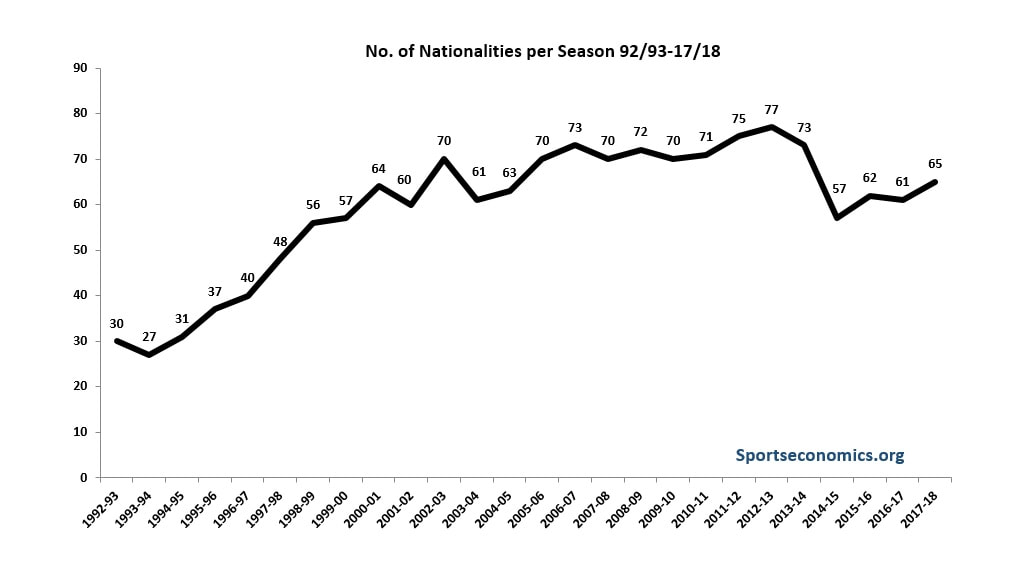With the Premier League beginning its 25th season tonight, its interesting to think about the evolution of the competition since 1992. Off the pitch, the economic growth of the industry, embodied by wage increases, transfer fee inflation, broadcast rights sales and the successful commercialisation of the ‘product’ stands out as the major development.
On the pitch, the internationalisation of the league is the most notable structural change for me. The influx of foreign talent has largely been a product of the Bosman ruling and the increasing wages on offer in the League. Notably, the increasing numbers of overseas players in the Premier League has been a controversial issue.
The charts below give an indication of the internationalisation of the Premier League over the last 25 years. The data for these charts has been gathered from multiple online sources and constitutes 15,162 individual observations.
The first chart displays the nationality of Premier League players in percentage terms by season based on whether they are English (white bars), from another EU country (light grey bars) or are non-EU (dark grey bars). In 1992, the majority of the talent in the league was from England. Only 35% of the players for the 17/18 season are English. This is the joint lowest percentage in the history of the competition and the share of English born player in the league has fallen over the past 25 years.



 RSS Feed
RSS Feed